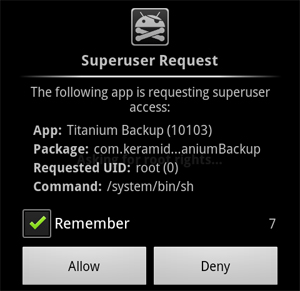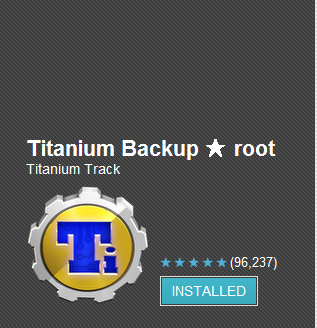
When you research Android rooting, you may feel like you’re Neo at the beginning of the Matrix: you can either take the red pill or the blue pill, but there’s no turning back once you make your decision.
That analogy is true in some ways, but it can be a bit misleading. Today, we’re going to explain Android rooting to you in the most basic possible way.
Explain Android rooting like I’m five years old

You know the Pentagon, right? That big five-sided building that is in charge of defending the United States? Well, think of Android like the Pentagon. Your name is Jim, and you work in the outermost layer of the Pentagon. You walk into the front door of the Pentagon every day and sit down at your desk in the outermost layer of the building.
You, Jim, are happy with your job. But you’re curious. Every day, you walk past doors to the inner layers of the building. You can walk around the entire outer ring of the building – which is where you work –but access to the inner core is restricted by big green alien guards that look like this:

Some of these alien guards wear uniforms with a Samsung logo. Others wear uniforms with HTC, LG, or Acer logos. One day, you strut past one of these green aliens and try the handle to the door. It’s locked. The alien looks at you, smiles, then laughs and gently pushes you away.
When you root your device, those green alien guards instantly disappear and the doors to the inner courtyard fly open. You suddenly have access to the Pentagon’s deepest, darkest secrets. You can even order employees around once you get in there. You can explore all the inner rings of the Pentagon as you please, and you can even move things around and arrange them exactly how you like. You’re instantly appointed the head of the Department of Defense. And that makes a lot of people like Jim happy.
Enough with the stories, what cool things can I do with a rooted Android?
If you’ve come this far in the article, then you’re probably ready for me to tell you all the cool and useful things you can do with a rooted Android that you can’t do with a non-rooted device. Those things include:
-You can delete annoying bloatware apps and free up space on your storage unit
-You can transfer installed apps to the SD card to free up space on your phone’s memory
-You can back up everything on your Android, including apps
-You can delete any app from your Android with just a click
-You can install new custom ROMs that change the user interface and alter the Android experience in a variety of ways. Some users choose to install a new custom ROM every week (there are tens of thousands out there) to feel like you’re constantly upgrading your phone. Since custom ROMs are swapped out with a single click, it’s never been easier to feel like you own a new phone.
-You can update your device to the latest version of Android without waiting for your carrier or manufacturer to figure things out
-You can download custom themes to customize your user experience even further
-You can control CPU usage, which saves battery life

-You can download apps that automatically throttle CPU usage when you don’t need it, which saves even more battery life
– You can download apk versions of apps from the XDA Developers Forum and instantly install them without worrying about restrictions
-You can flash the latest versions of Android to old Android devices that would never normally get Android 4.2
-You can protect your device way more effectively because antivirus software apps work better when granted superuser permission
-You will no longer need to listen to manufacturers and carriers telling you how to use your device
That all sounds good, but what’s the catch?
Like everything in life, there are some downsides to rooting. Here are some things you should consider before downloading automatic rooting software like One Click Root:
-If you attempt to root your device yourself (i.e. if you don’t use One Click Root), there’s a chance you could brick your Android and never recover it
-You might void the warranty on your device, and carriers may not service rooted devices if you encounter problems with it

-If you don’t use One Click Root, the rooting process can be time-consuming and fraught with frustration
-If you don’t use One Click Root, reversing the root (i.e. ‘unrooting’ your Android) can be difficult if not impossible
The security myth about rooting Android
Some people who don’t understand Android rooting will tell you that it makes your phone less secure. There’s some truth to that, but it’s misleading. When you root Android, you – the owner of the device – have the ability to grant apps ‘superuser’ position. This gives third-party apps intimate control over the Android operating system – which is great if the apps were made by trusted programmers.
But if you accidentally download a malicious app and give it superuser permission, you could be in trouble. The app could install a keylogger or spam your phone with notifications.
But here’s the thing: if you download suspicious-looking apps from untrustworthy sources, you would get a virus on an unrooted Android device too. Avoid downloading ‘free premium’ style apps, or apps with no reviews and download history, and your chances of encountering an Android virus drop to virtually 0%.
Plus, as we mentioned above, antivirus software actually works better on a rooted Android. So if you do get a virus, your rooted Android will have a better chance of finding it and eliminating it from your system.
Ready to root?

Remember at the start of this article when we told you that rooting Android was like choosing the red pill or the blue pill? Well, once Neo mad that decision, he knew there was no turning back. When you use One Click Root, you can reverse the process at any time you choose. One Click Root will even return your money if the process didn’t work.
There’s really no downside to rooting. If you consider yourself a tech whiz, try rooting Android using scripts and special applications. If you consider yourself an average Android user, then One Click Root is a lifesaver – or at least a phonesaver – since the foolproof process can be performed by anybody. It just takes a single click!
